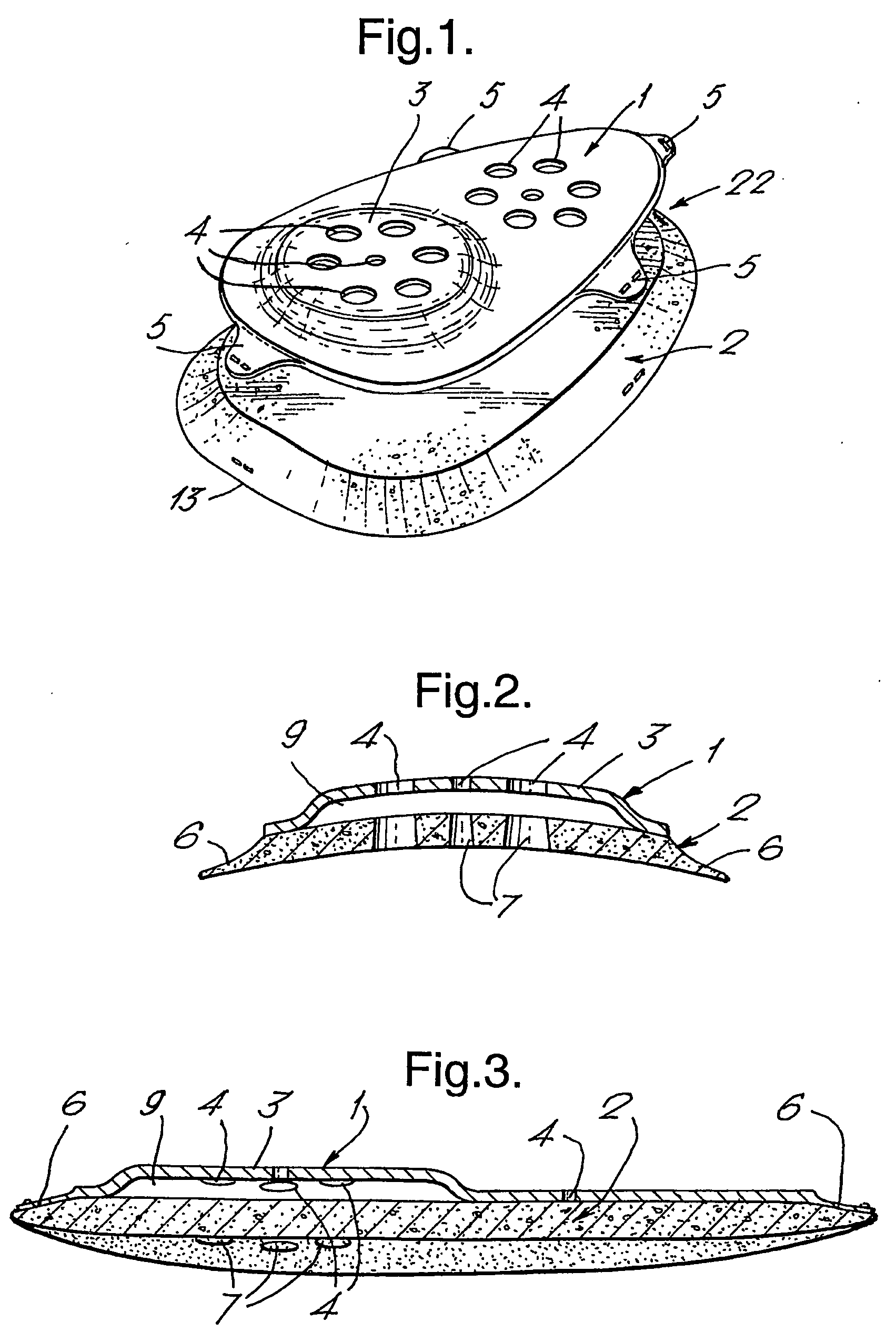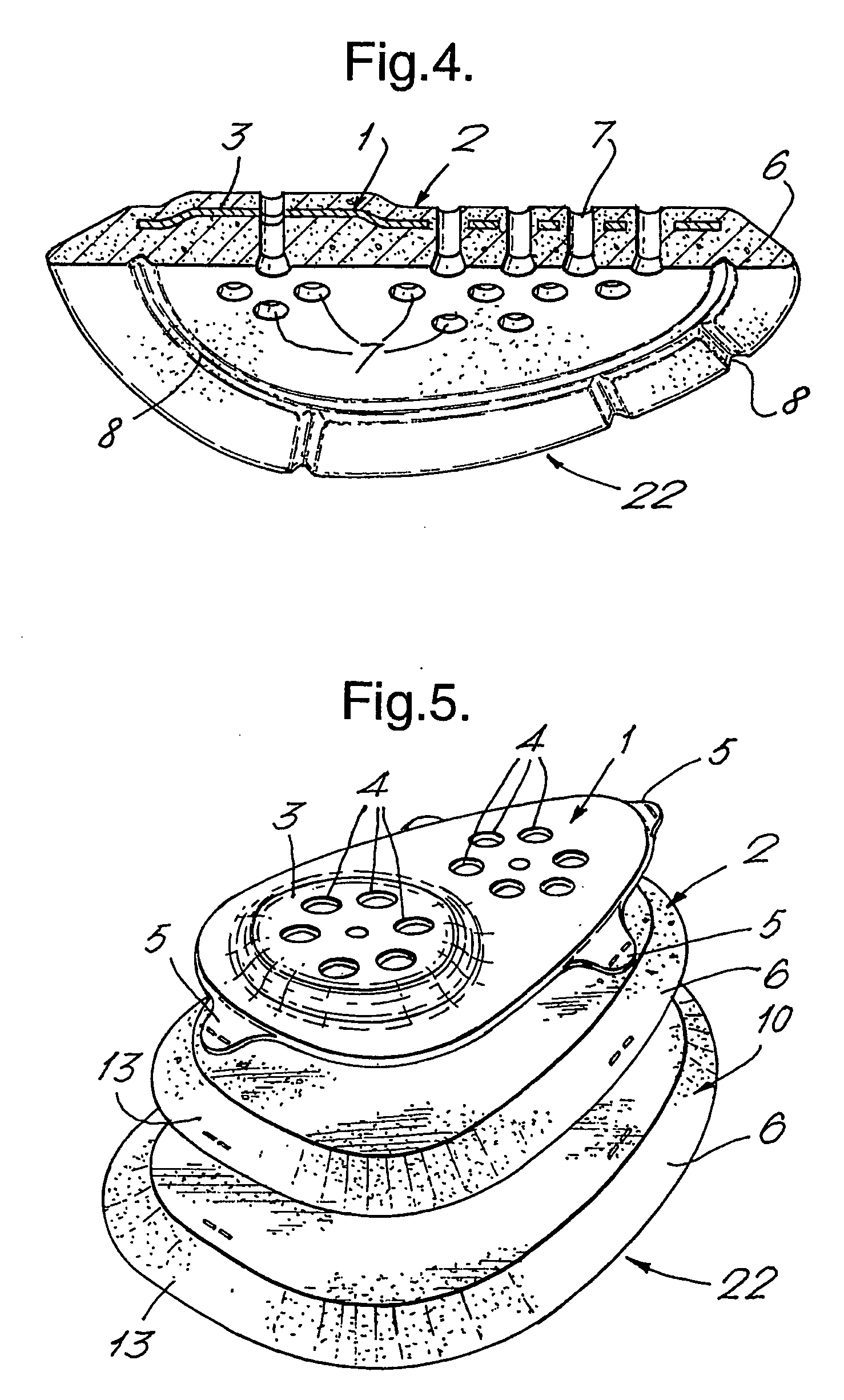Proection pad for the trochantheric region and device comprising the pad
a technology for trochantheric region and proection pad, which is applied in the direction of protective garments, medical science, garments, etc., can solve the problems of significant damage to the surrounding soft tissue, and achieve the effects of improving heat and moisture dissipation, facilitating user wear, and ensuring safety
- Summary
- Abstract
- Description
- Claims
- Application Information
AI Technical Summary
Benefits of technology
Problems solved by technology
Method used
Image
Examples
Embodiment Construction
[0031] The first example of protective pad comprises a substantially rigid layer 1 and a layer of dense closed-cell resilient foam material 2. The substantially rigid layer 1 includes a projecting boss 3 and arrays of ventilation holes 4. The substantially rigid layer 1 also includes thin fixing lugs 5 projecting from its periphery. The dense closed-cell resilient foam layer 2 includes a chamfered outer peripheral region 6 and ventilation holes 7 which align with the ventilation holes 4 in the rigid layer 1. The ventilation holes 7 may be of larger diameter than the ventilation holes 4 or may be tapered as shown in FIGS. 2 and 3.
[0032] The substantially rigid layer 1 may be formed from polyurethane or polypropylene and the closed cell resilient foam layer 2 may be formed from polyurethane or, for example EVA foam. The two layers may be bonded together using an adhesive but in this example they are stitched together through the fixing lugs 5. The periphery of the substantially rigid...
PUM
 Login to View More
Login to View More Abstract
Description
Claims
Application Information
 Login to View More
Login to View More - R&D
- Intellectual Property
- Life Sciences
- Materials
- Tech Scout
- Unparalleled Data Quality
- Higher Quality Content
- 60% Fewer Hallucinations
Browse by: Latest US Patents, China's latest patents, Technical Efficacy Thesaurus, Application Domain, Technology Topic, Popular Technical Reports.
© 2025 PatSnap. All rights reserved.Legal|Privacy policy|Modern Slavery Act Transparency Statement|Sitemap|About US| Contact US: help@patsnap.com



